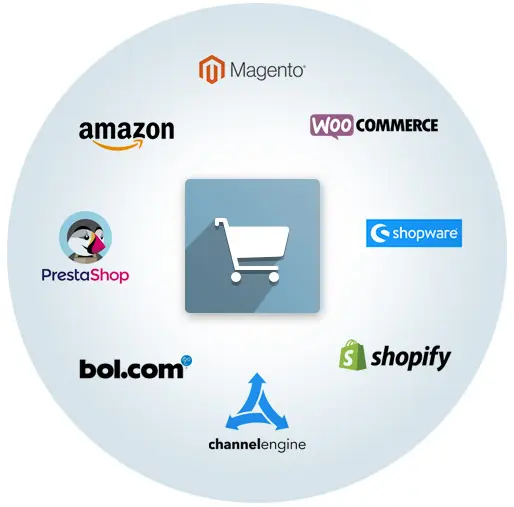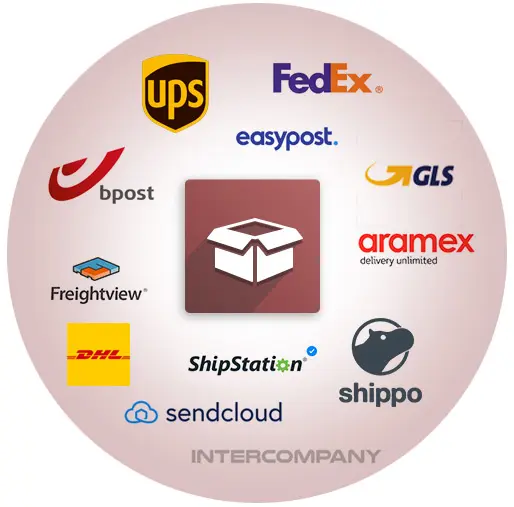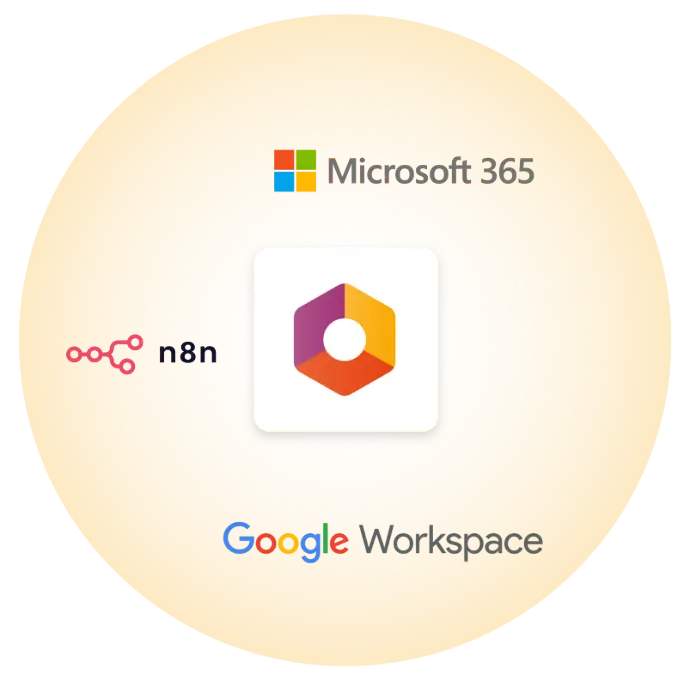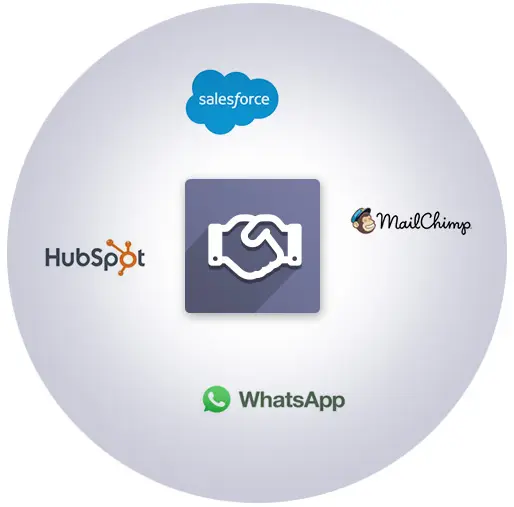Why Odoo Integrations Matter for ERP Success
Enterprise Resource Planning (ERP) systems are designed to centralize business processes but in reality, very few organizations run their operations with one tool alone. Project managers often face the challenge of connecting existing applications like e-commerce shops, accounting systems, logistics providers, or CRM tools with their ERP.
This is where Odoo ERP integrations become critical. An ERP project rarely fails because of the software itself, but rather because of poorly planned or overly complex integrations. For project managers, mastering this topic means securing data consistency, reducing manual work, and keeping the ERP project on budget.
In this guide, we will look at the most common Odoo integration challenges, how Odoo addresses them, and which best practices project managers should follow to ensure success.
Key Takeaways
- Odoo ERP integrations enable seamless data exchange between systems such as e-commerce, accounting, logistics, or CRM.
- Project managers should distinguish between standard, customized, and individual integrations to optimize cost, effort, and flexibility.
- Standard connectors are quick and low-maintenance, customized connectors allow adaptation to specific business processes, individual integrations are only recommended for complex, unique systems.
- Odoo APIs (REST & XML-RPC) and community modules facilitate integration, automation, and real-time data access.
- Best practices: prioritize integrations, favor standard solutions, plan for scalability, ensure monitoring & documentation.
The Biggest Challenges in Odoo ERP Integrations
While Odoo is a highly flexible platform, integrations always come with certain risks. Project managers should be aware of the following pitfalls:
1. Data quality & inconsistent formats
Legacy systems often use different structures for product codes, customer IDs, or accounting data. If these are not standardized, integrations can create duplicates or errors in Odoo.
2. Manual workload without automation
Without interfaces, employees spend hours exporting and importing data via Excel or CSV. This not only wastes time but increases the risk of mistakes.
3. Complexity of legacy systems
Many companies still rely on older software that lacks modern APIs. This can make real-time synchronization difficult and may require custom connectors.
4. Version upgrades & maintenance issues
Odoo evolves quickly – each new version may require adjustments in custom-built connectors. Without proper planning, updates can become costly.
5. Hidden costs from custom developments
Building everything from scratch might seem flexible, but it often results in higher costs, more maintenance, and dependency on individual developers.
How Odoo APIs Enable Seamless Integrations
The good news: Odoo was built with openness and flexibility in mind. Project managers can leverage different integration options depending on complexity and requirements.
Flexible APIs (REST & XML-RPC)
Odoo offers a REST API and XML-RPC API, enabling external systems to read, create, update, or delete records. This makes Odoo highly adaptable for both real-time and batch integrations.
Standard connectors
Out-of-the-box, Odoo provides standard connectors for:
- Payment providers (PayPal, Stripe, Mollie, Adyen, etc.)
- E-commerce platforms (Shopify, WooCommerce, Magento, Odoo e-commerce)
- Logistics partners (DHL, UPS, FedEx)
- Accounting & finance (DATEV in Germany, other localized options)
- Productivity tools (Google Workspace, Microsoft 365)
Community modules & marketplace
Thousands of Odoo community modules are available, many of which focus on integrations. The Odoo Apps marketplace is another valuable source for ready-made connectors.
Open-source ecosystem
Unlike proprietary ERP systems, Odoo’s open-source approach ensures less vendor lock-in and more flexibility to adapt integrations to future requirements.
Types of Odoo Integrations: Standard, Customized & Individual
When planning Odoo ERP integrations, one of the first decisions project managers face is which type of integration is suitable for each system. Understanding the differences helps you balance speed, cost, and flexibility while avoiding common pitfalls.
1. Standard Integrations
- What they are: Ready-made connectors included in Odoo or available via the Odoo Apps marketplace.
- Why it matters for project managers: Quick to implement, low risk, predictable maintenance.
- Pros: Fast setup, proven functionality, minimal development effort.
- Cons: Limited flexibility – may not cover all unique business rules.
- Example: Shopify, WooCommerce, PayPal, or DHL standard connectors.
Tip: Always check first if a standard connector exists. It saves time and reduces complexity.
2. Customized Standard Integrations
- What they are: Existing connectors adapted to your company’s specific requirements.
- Why it matters for project managers: Provides a compromise between ready-made solutions and fully custom interfaces.
- Pros: More flexibility than standard connectors, still faster and cheaper than building from scratch.
- Cons: Requires development expertise and ongoing maintenance.
- Example: A DHL connector extended with special shipping rules for international customers.
Tip: Decide early which features are essential vs. “nice to have” to avoid scope creep.
3. Individual / Fully Custom Integrations
- What they are: Integrations built from scratch to connect Odoo with systems that have no ready-made connector.
- Why it matters for project managers: Necessary for unique or legacy systems where standard connectors cannot meet requirements.
- Pros: Maximum flexibility, can fully match complex processes.
- Cons: Higher cost, longer implementation time, dependency on developers, potential issues during Odoo upgrades.
- Example: Integration with a proprietary ERP system or a specialized manufacturing tool.
Tip: Reserve custom integrations for critical systems that cannot be addressed otherwise. Always plan for future Odoo upgrades and allocate resources for maintenance.
Real-World Scenarios Where Odoo Integrations Add Value
To illustrate the potential, here are common scenarios where Odoo integrations deliver tangible results:

E-commerce Integration like Shopify, Shopware, Magento
Automate the entire order-to-delivery process: webshop orders flow directly into Odoo Sales, stock levels are updated in real-time, and invoices are generated automatically. ensuring each app is set up and ready to use.

Finance & Accounting Integration like DATEV or ELSTER
For German companies, DATEV integration ensures GoBD compliance and eliminates manual exports. Internationally, Odoo integrates with popular accounting tools like QuickBooks or Xero.

Logistics Integration (DHL, UPS, FedEx)
Shipping connectors allow project managers to reduce manual label creation. Customers receive tracking numbers automatically, and inventory is updated in real time.

Productivity Tools (Google Workspace, Microsoft 365, n8n)
Calendar synchronization, email integration, and document management connect Odoo seamlessly with widely used productivity suites.

CRM Integration (HubSpot, Salesforce, Odoo CRM)
Some companies keep an external CRM for marketing automation but use Odoo for sales and operations. Connectors ensure a 360° view of the customer journey.
Best Practices for Project Managers
Based on over 10 years of Odoo implementation experience, here are the best practices project managers should follow:
- Minimize integrations
Always ask: can this process be mapped directly in Odoo instead of maintaining another tool? Each avoided integration reduces costs and complexity. - Prefer standard connectors
Whenever possible, use existing Odoo connectors or community modules instead of building custom ones. This ensures easier maintenance and compatibility with future Odoo versions. - Plan for scalability
Don’t only solve today’s needs. Make sure integrations can handle future growth, higher transaction volumes, or additional subsidiaries. - Document and monitor
Every integration should come with proper documentation. Set up monitoring and error handling to detect problems early. - Choose the right partner
A strong implementation partner helps evaluate whether to use standard or custom integrations, ensures best practices, and keeps the project sustainable.
Checklist for Successful Odoo Integrations
Project managers can use the following checklist when planning their Odoo ERP integrations:
Which systems are critical to integrate (must-have vs. nice-to-have)?
Are the required interfaces covered through Odoo APIs (REST/XML-RPC) or existing modules?
Which data flows need real-time sync, and which can run in batches?
Are there existing standard connectors or community modules available?
How will updates and version upgrades be handled?
Is there a clear error handling & monitoring process?
Who is responsible for documentation and maintenance?
Conclusion: From Challenge to Opportunity
ERP integrations don’t have to be a risk factor – with Odoo, they can become a growth enabler. By leveraging APIs, standard connectors, and community modules, project managers can connect their systems efficiently and avoid the most common pitfalls. Thanks to Odoo APIs and the wide range of standard and community connectors, integrations can be implemented efficiently.
The key lies in planning strategically, choosing the right integration approach, and working with an experienced Odoo implementation partner.
At OBS Solutions, we have supported international companies for over 10 years in mastering Odoo integrations. From e-commerce to accounting, logistics, or productivity – we ensure your ERP project runs smoothly and sustainably.
Ready to discuss your integration challenges?



